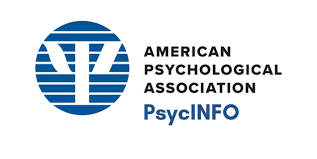The association of Social Anxiety and Self-Disclosure with Social Intimacy، Mediated by Perceived Responseiveness
Keywords:
Social Intimacy, Social anxiety, Self-Disclosure, Perceived ResponseAbstract
Background and Aim: Creating interpersonal relationships is considered as one of the basic human motives for which social intimacy is required. Factors influencing social intimacy are self-disclosure and social anxiety. From this perspective, the goal of this study was to investigate the relationship between self-disclosure and social anxiety with social intimacy, mediated by perceived responsiveness. Methods: The research method was descriptive-correlational. The statistical population included all students of the Islamic Azad University of Kerman in 2019 (1800 people). Considering the volume of samples in the structural equations, 350 students were selected as the statistical sample using the Stratified Random Sampling method. This group took the Lefcourt (1982), Kahn & Hessling (2001) Self-disclosure, Watson and Friend (1969) Social Anxiety, and Reis et al. (2006) Perceived Responsiveness questionnaires. A total of 242 qualified questionnaires were received. Data was analyzed by structural equation method. Results: The results indicate an increase and significant effect of Self-disclosure on Perceived Responsiveness (P = 0.250), a reduced and significant effect of Social Anxiety on Perceived Responsiveness (P = -0.554), an increased and significant effect of Perceived Responsiveness on Social Intimacy (P = 0.405), an increased and significant effect of Self-disclosure on Social Intimacy (P = 0.137) and a reduced and significant effect of Social Anxiety on Social Intimacy (P = -0.178). Conclusion: Increased Self-Disclosure and Perceived responsiveness leads to an increase in Social Intimacy in relationships and increased Social Anxiety leads to a reduction in the level of Perceived Responsiveness and therefore a decrease in Social Intimacy. Due to the importance of the role of social intimacy on mental health of the community, it is proposed that the appropriate organizations prepare extensive planning to manage and treat social anxiety in individuals and hold instructive classes, especially for parents and primary school teachers.
Downloads
Downloads
Published
Issue
Section
License
Copyright (c) 2022 Golnaz Jalali, Amanallah Soltani , Amirhossein Roshani Tabrizi (Author)

This work is licensed under a Creative Commons Attribution-NonCommercial 4.0 International License.















